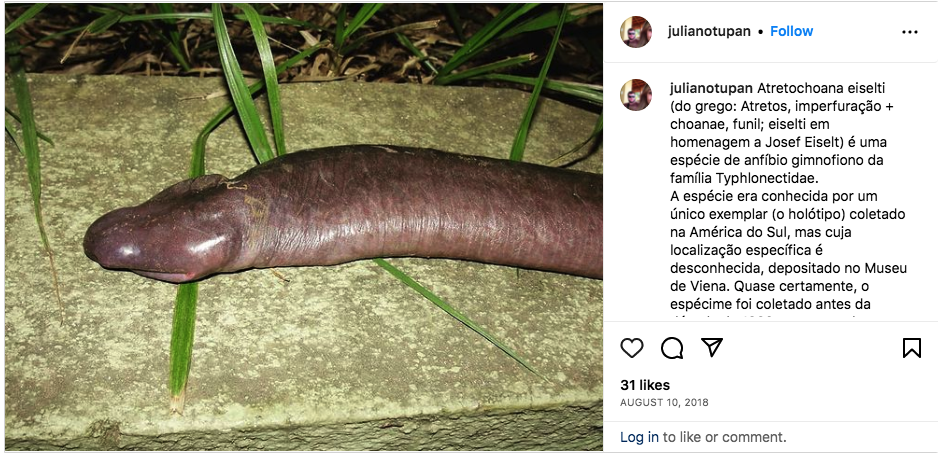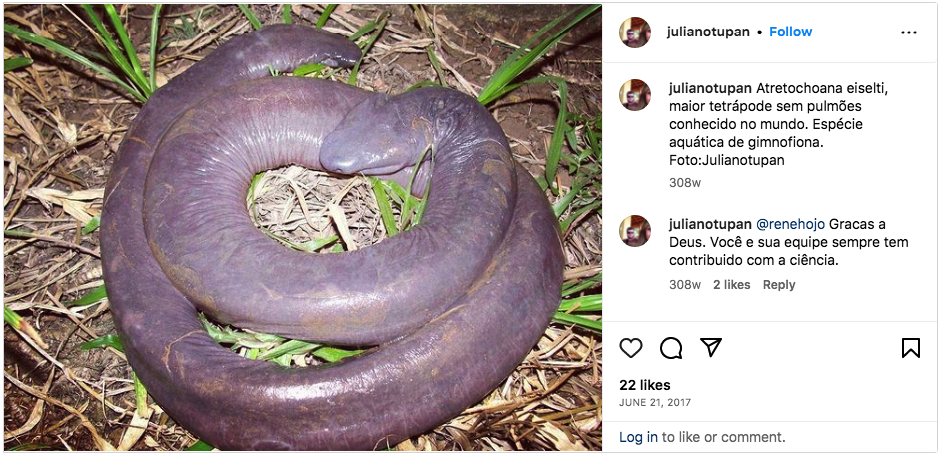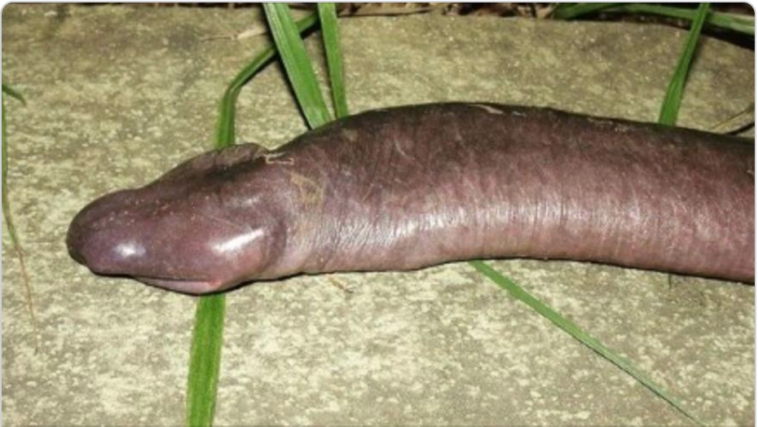The numerous hidden wonders of the animal realm never cease to astound us.
Nevertheless, certain animals stand out more than others and have the power to rapidly make international news due to their peculiar appearances or uncommon characteristics.
I’ll be the first to admit that when I first saw a picture of this strange “penis snake,” I thought it was a prank. I was shocked to learn that it was a real animal. So join me as I reveal the tale behind the shocking viral photo that has horrified hundreds of people.

Throughout time, phallic-shaped artifacts have consistently been able to attract attention and pique interest. A few years ago, a number of pictures that showed a creature that many people couldn’t believe appeared online.
The intriguing and peculiar-looking creature has a striking appearance, earning itself a variety of apt titles including the “penis snake,” “blind snake,” or the “man-aconda.”
But no, it’s not what you think it is.

The creature, known as Atretochoana eiselti, defies expectations by belonging to a completely different group of animal yet having a striking resemblance to a snake. It is the largest known lungless tetrapod and an amphibian more closely related to the salamander.
This unusual critter, which can only be seen in the Brazilian Amazon, has long been thought to be extinct. In the late 1800s, Sir Graham Hales and Sir Brian Doll went on an expedition and made the initial discovery.
The initial description of A. eiselti, however, wasn’t published until 1968. It was reclassified in 1996 as a separate and exclusive genus called Atretochoana as a result of additional investigation and study.
In the Amazonas, this caecilian species was rediscovered in 2011. The “penis snake” is a unique animal that lives only in the Amazon River and its biggest tributary, the Madeira River in Brazil. No other recorded sightings of this animal have ever been reported outside of this specific region.
A family of the phallic-shaped critters was discovered at the bottom of Brazil’s Madeira River in 2011, which led to the discovery of the viral images that swept the internet a couple of years ago. They were discovered after draining the river to inspect a hydropower dam.
Julian Tupan, a biologist with the Santo Antonio Energy firm involved in building the dam, claims that nothing is known about the limbless, lungless frogs.

“Of the six we collected, one died, three were released back into the wild and another two were kept for studies” he told Estadao, according to the U.K.’s The Sun.
Tupan stressed that the “snakes” are not dangerous and are not likely to act aggressively.
“Despite looking like snakes, they aren’t reptiles and are more closely related to salamanders and frogs. “We think the animal breathes through its skin, and probably feeds on small fish and worms, but there is still nothing proven.
“The Amazon is a box of surprises when it comes to reptiles and amphibians. There are still much more to be discovered.”
One of the species discovered in the riverbed was heavily photographed, according to a research published in the Brazilian scientific journal Boletim do Museu Paraense Emlio Goeldi: Ciências Naturais. In the Madeira River, some of the creatures were returned to their original habitat, and others were taken to the Emilio Goeldi Paraense Museum in Belem, Brazil.
The most extensively shared image was posted on Julian Tupan’s Instagram page and shows an adult female A. eiselti that is just about 40 inches long.Despite the curiosity that surrounds these fascinating creatures, there is still a lot that is unknown about them, and our understanding of them is still rather limited.
Researchers are baffled by a fascinating facet of their nutritional preferences. The animals with phallic shapes are thought to devour small fish, worms, and other aquatic invertebrates, but more thorough investigation is required to corroborate this theory.

Their respiratory system also remains a mystery because it’s unclear how they breathe. The six specimens’ 2011 discovery added still another level of complication to this riddle. The location of their discoveries was particularly noteworthy because there wasn’t much access to cold, swift water. Given that warmer water has less oxygen, their life without lungs is all the more remarkable.
The species is thought to have a large distribution throughout the Brazilian Amazon and may even expand into Bolivia, according to these most recent discoveries.
We are constantly in awe of nature’s unending beauties and unexpected surprises. The natural world is a never-ending source of intrigue and discovery, from the deepest ocean depths to the highest mountaintops.
Share this extraordinary story on Facebook with your friends and family to ignite their curiosity and spark conversations about the wonders of nature!


